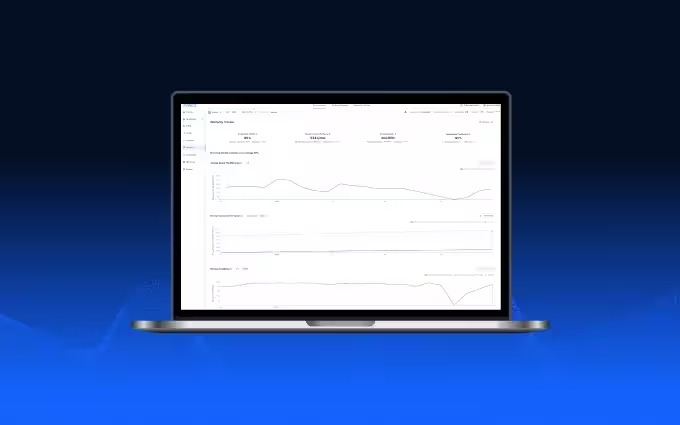Why LTSAs Alone Can’t Guarantee Peak BESS Performance
Even the best long-term service agreements leave visibility gaps in BESS operations. LTSAs protect operators against long-term commercial risks. But they may not adequately address day-to-day operational shortcomings. Find out where many service agreements fall short and why ongoing performance monitoring matters.

When managing battery energy storage systems (BESS), many asset owners and operators rely on vendor-provided long-term service agreements (LTSAs) to ensure smooth operations and stable performance. These agreements are an important part of risk management. They define responsibilities, outline performance guarantees, and set service expectations over the system’s lifetime.
However, in practice, traditional LTSA frameworks fail to capture the day-to-day performance of the BESS and its interaction with the technicians who operate and maintain it. From testing schedules to service response times and data ownership, there are limitations that operators should be aware of. Understanding these gaps is key to ensuring both contractual compliance and optimal system performance.
We explain five shortcomings that operators should be aware of.
Who Defines “Performance”?
Most LTSAs come with AC performance guarantees such as availability, efficiency, capacity and ramp rate. But these guarantees are typically defined and verified by the supplier. That means the same party responsible for delivering performance is also responsible for evaluating it.
Would you trust a student to create and take their own exam, then grade it, all without ever showing their work? What does “performing as expected” then really mean, and according to whose measurements?
Operators and asset managers should be able to independently verify the performance of their BESS. They need to make sure that the reported numbers reflect actual conditions, not just contractual definitions, and that these results are repeatable.
Annual Capacity Tests Leave Long Blind Spots
It’s common for LTSAs to include just one full-cycle capacity test per year. While this satisfies contractual obligations, it leaves long intervals where performance data isn’t evaluated in depth.
Additionally, most LTSAs focus on grid-level performance, which is generally done through system overbuild and guarantees at the AC meter.
But as new high-density DC designs are deployed at scale the initial overbuild is decreasing. Operators now need to detect and correct early-stage anomalies within the batteries long before they become larger issues.
Traditional remote monitoring tools often can’t see behind the meter, making it difficult to pinpoint issues. To close that gap, operators rely on data analytics to identify and enforce corrective maintenance at the DC level.
It’s similar to how commercial aviation handles maintenance. Aircrafts fly long, demanding duty cycles, often 8- 12 hours a day, for over two decades, similar to a BESS.
Airplanes are thoroughly inspected prior to every flight, regardless of distance, how smoothly the last trip went, or how softly the pilot landed. Would you board a plane with only one annual check-up and no maintenance performed between hundreds of flights? Why would you accept this standard for your BESS?
Revenue Losses Are Not Uniform
Not all performance shortfalls have the same financial impact. The effect of underperformance depends heavily on when it occurs. A dispatch shortfall during a low-revenue period might go unnoticed until the next capacity test or worse, until a missed market opportunity, penalty, or forced outage exposes the issue.
By then, the financial loss has already happened.
This time-weighted risk is especially critical in markets where just a few days of underperformance can make a significant difference in annual returns.
To manage this, many operators now take a more active role in day-to-day performance tracking. By capturing granular site data and using data analytics, they estimate KPIs such as usable energy, round-trip efficiency, and State of Health (SoH) on a daily basis.
These insights also help operators solve issues faster. Instead of waiting for the service provider to explain what’s going wrong, operators can see for themselves what’s happening inside the BESS and decide when to intervene, when to request maintenance and where exactly to look.
Preconditioned Tests Can Skew Results
Before a capacity test, suppliers often “prepare” systems. They balance modules or recalibrate State of Charge (SoC) to achieve optimal conditions. While this might be agreed in the warranty conditions and ensures repeatable test results, it doesn’t reflect how the system performs under normal operating conditions.
Think of it this way: a capacity test certifies the BESS to perform like a tortoise: slow and steady cycles.
Real-world operations, however, look more like the hare: reacting instantly to grid signals, changing direction without warning, and rarely getting a break.
This contrast highlights why understanding performance only through annual tests can miss what really happens in everyday operation.
Real-world operations include irregular cycling, fluctuating temperatures, curtailments, interactions with other plants, limitations on power level and depth of cycle, and variable dispatch profiles. Annual capacity tests rarely mirror true, day-to-day performance and leave operators with a false sense of security.
For operators it’s important to capture BESS behavior continuously. Then they can identify performance drift, weak cells, SoC inaccuracies or imbalances as they emerge – not just once a year.
Operators can prioritize and organize issues in a structured, actionable way, ensuring technicians arrive on site with a clear plan and the right tools in hand.
For remote unstaffed sites, this approach also helps make every visit count. Technicians can complete additional checks or maintenance tasks in order of urgency.
By shifting from reactive fixes to a planned, predictive maintenance strategy, operators reduce forced outages, minimize downtime, and protect revenue over the long term.
Beyond Scheduled Tests: Why Continuous Insight Matters
Most well-written LTSAs already define how performance and ageing guarantees are validated, usually through a contractual reference performance test (RPT).
The RPT specifies the operating window (such as SoC range, C-rate, temperature, and preconditioning) and the acceptance criteria, like net discharged energy measured at the product metering point.
This test provides the contractual source of truth for verifying capacity and degradation.
For practical recommendations on negotiating clear, data-driven LTSAs, have a look at the BESS LTSA Guide.
For operators, the challenge lies less in defining what to measure and more in ensuring that tests are executed correctly, documented transparently and supported by ongoing operational data.
Continuous monitoring complements these formal tests. It provides visibility into what happens between the scheduled tests. With ongoing insight, operators can:
- Independently verify day-to-day performance trends using their own data.
- Detect early signs of underperformance or degradation before the next official test, for example in reduced usable energy, round trip efficiency, SoC inaccuracies or imbalance.
- Understand context and root causes through component-level signals such as thermal limits, inactive strings, or imbalance spreads.
- Improve response time and reduce downtime by fostering a more transparent and cooperative relationship between owners and service providers.
- Decrease O&M costs by combining corrective, predicted and preventative maintenance actions into a single truck roll with the correct personnel on board.
This continuous insight ensures operators don’t just see a snapshot once a year. They see the story behind it in real time. It’s not about replacing LTSAs but about complementing them with continuous and independent visibility.
The combination of contractual guarantees and continuous insight allows operators to make more confident decisions and sustain asset value over time.
Key Takeaways
- LTSAs protect against service risk, but don’t provide full operational visibility.
- Performance definitions vary, and it’s worth clarifying them with suppliers.
- Preconditioning can mask real-world performance trends.
- Annual testing leaves long blind spots. Analytics helps to deliver a continuous and unbiased understanding of BESS performance.
Ready to see what your LTSA doesn’t show you?
See how BESS Analytics helps operators uncover hidden performance issues and protect asset value. Book a demo.
Sign up for the next live group demo and learn how TWAICE can transform your BESS operations. In just 30 minutes, you’ll get a demo of key features and use cases, and engage with our product experts for a live Q&A.

.avif)


